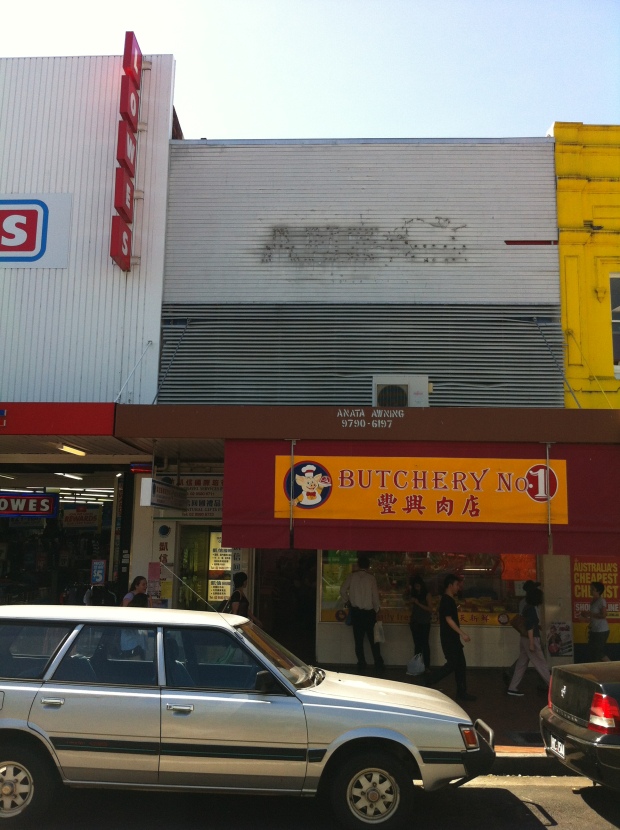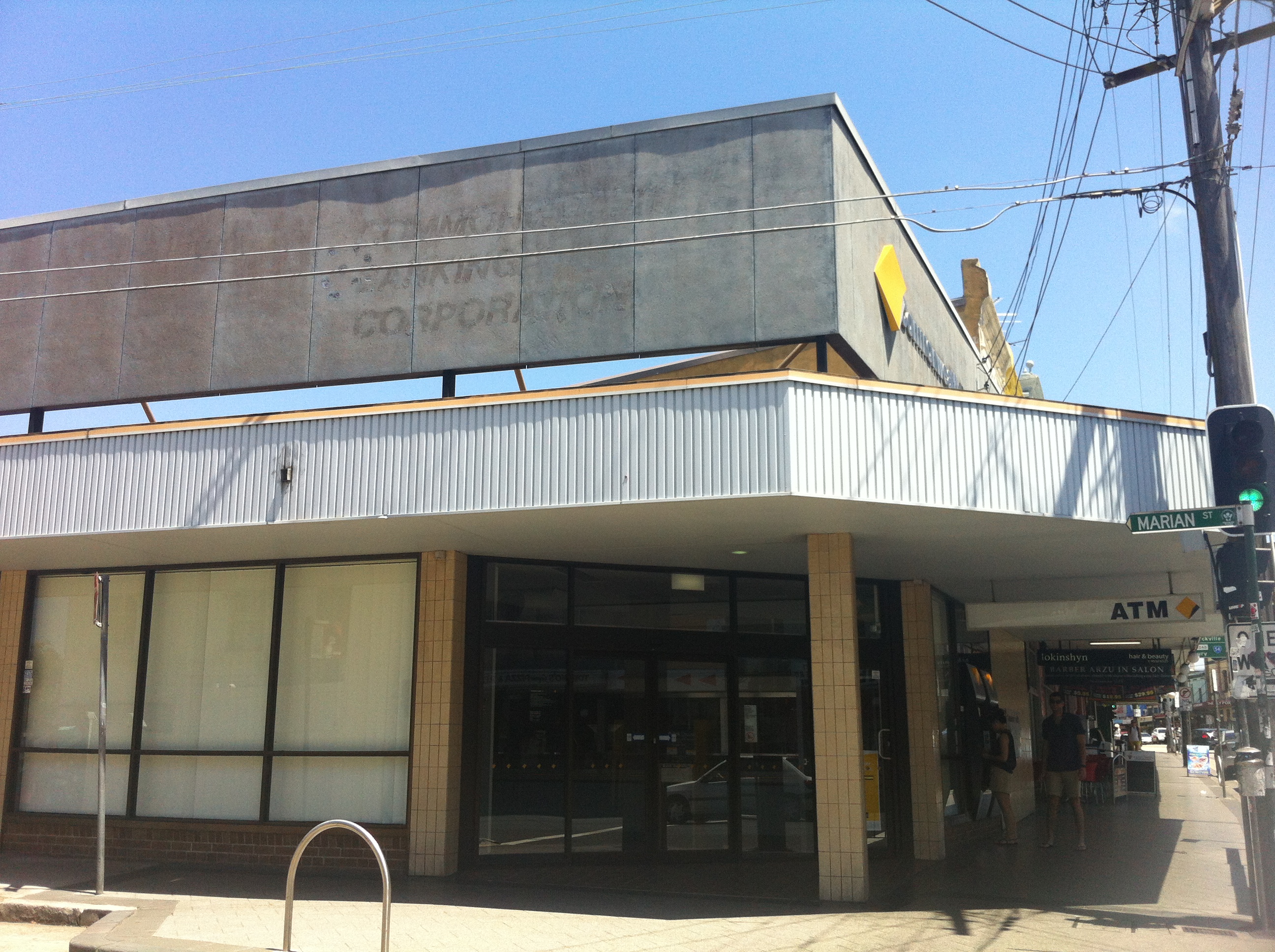ANZ Bank/Black Pepper Clothing – Panania, NSW
With all the outrage and media attention directed toward the impending closure (or just closure, if you’re reading this in the future) of Panania’s Commonwealth Bank branch, anyone would think the community had never lost a bank before.
Just take a look directly across the road from the soon-to-be-blog-worthy Commonwealth: another ex-ANZ. You’ll note the distinctive striped shopfront design that has proven nearly impossible to remove in past instances, and the residue of the extra-strength glue they used to bolt their fitful branding above the awning. Hell, even the ugly tilework has remained (much to the detriment of current tenants Black Pepper). In fact, essentially the only thing that hasn’t stuck around are the customers. Are you listening, Commonwealth?
And if the A Current Affair story on the Panania Whichbank doesn’t tug at your heartstrings, don’t forget: every time a bank branch closes, a BSB number becomes an orphan. ;_;
Coles/Delphi Bank & HSBC – Burwood, NSW
In further evidence that the world is an evil place, I present to you Exhibit ZZY. Once a quaint, harmless little art-deco Coles supermarket and variety store, this Burwood Road location now offers only a variety of soulless banking institutions, neither of which could afford decent paint:
While we’re on the topic, remember when Coles was just a supermarket? Now, each Coles pretty much functions as a bank: you can withdraw, deposit, you wait in a long line to get treated like dirt, and they assault you with painful television ads in your own home. In a further chilling parallel, Coles is even attempting an insurance service now, which by all accounts seems to be going over as well as those Status Quo ads.
Past/Lives Flashback #10: Butchery No. 1 – Hurstville, NSW
As promised, here’s the first in a series of articles taking a look back at the top ten most popular Past/Lives posts of the last year. If I was smart, I would have picked the ten least popular posts so as to boost their views, but there’s a good reason the Belfield denture clinic never found its audience.
With that in mind, it’s to my complete amazement that I present the tenth most popular entry, Hurstville’s No. 1 Butchery.
Original article: Food Fair/ANZ Bank/The Base Store/No1 Butchery – Hurstville, NSW
First things first: there are no obvious changes. Given the building’s colourful history, it’s almost a surprise there’s been no activity over the last 12 months, but there you have it…NO changes whatsoever (perhaps with the exception of the chemist next door having become “Australia’s cheapest chemist”. Yeah, right). It’s as ugly a shopfront as ever, and that demonic pig in the logo is just as disturbing. I’d be willing to bet those people walking past are the same as last year, too.
What’s really interesting to me about this place is that just over the last few weeks, it’s exploded in terms of page views. Why? The whole point of this series was to show you how things have changed over a year, and to find something new to add, so this is a great start. What’s so special about this place? Then again, that’s probably what you were saying when I published the original article a year ago. Wait! Do you feel that? It’s moments like these that bring us closer, dear reader.
Don’t worry, they won’t all be like this.
St. James Theatre/Beverly Hills Cinemas – Beverly Hills, NSW
 Let’s cut to the chase: the Beverly Hills Cinemas are looking a little…porky these days. It’s hard not to notice the expanding waistline anymore, even for the sake of politeness. What I’m saying is, if the Beverly Hills Cinemas were a person, they’d need to take the Kayla Itsines challenge a few times to squeeze back into those trackpants.
Let’s cut to the chase: the Beverly Hills Cinemas are looking a little…porky these days. It’s hard not to notice the expanding waistline anymore, even for the sake of politeness. What I’m saying is, if the Beverly Hills Cinemas were a person, they’d need to take the Kayla Itsines challenge a few times to squeeze back into those trackpants.
But it wasn’t always this way. Back before the cinema was built, the suburb was known as Dumbleton, after a nearby farm. The opening of the Dumbleton train station in 1931 had opened up the suburb to the rest of Sydney in a way the previous public transport option – a coach service from Hurstville station – had not.
Dumbleton’s first shop had only opened in 1908 (on the site of the present day Beverly Hills Hotel), so there wasn’t exactly a major reason to go there. Dumbleton residents hoped to change this in 1910, when a post office was opened within the existing store. It was like the proto-Westfield.
The Second World War brought military personnel to Dumbleton, further increasing its population and forcing it to come up with more shops to keep people entertained, but it’s kinda hard to make anything entertaining when your suburb’s name is Dumbleton.
In late 1938, plans began for a picture theatre along King Georges Road with a projected completion date of 1940. I suppose the Dumbletonians were hoping to emulate the success of the Savoy theatre in nearby Hurstville, but they still had the nagging problem of that name.
An American cultural influence had been building in the outskirts of Sydney with the advent of cinema, so with an impending theatre and the belief that the USA would soon be joining the war effort, a move was made in 1940 to change the suburb’s name to the much more glamourous sounding Beverly Hills – Hollywood on the East Hills line. The Californian equivalent was home to famous movie stars, and with the completion of the St. James Theatre later that year, so would Dumbleton.
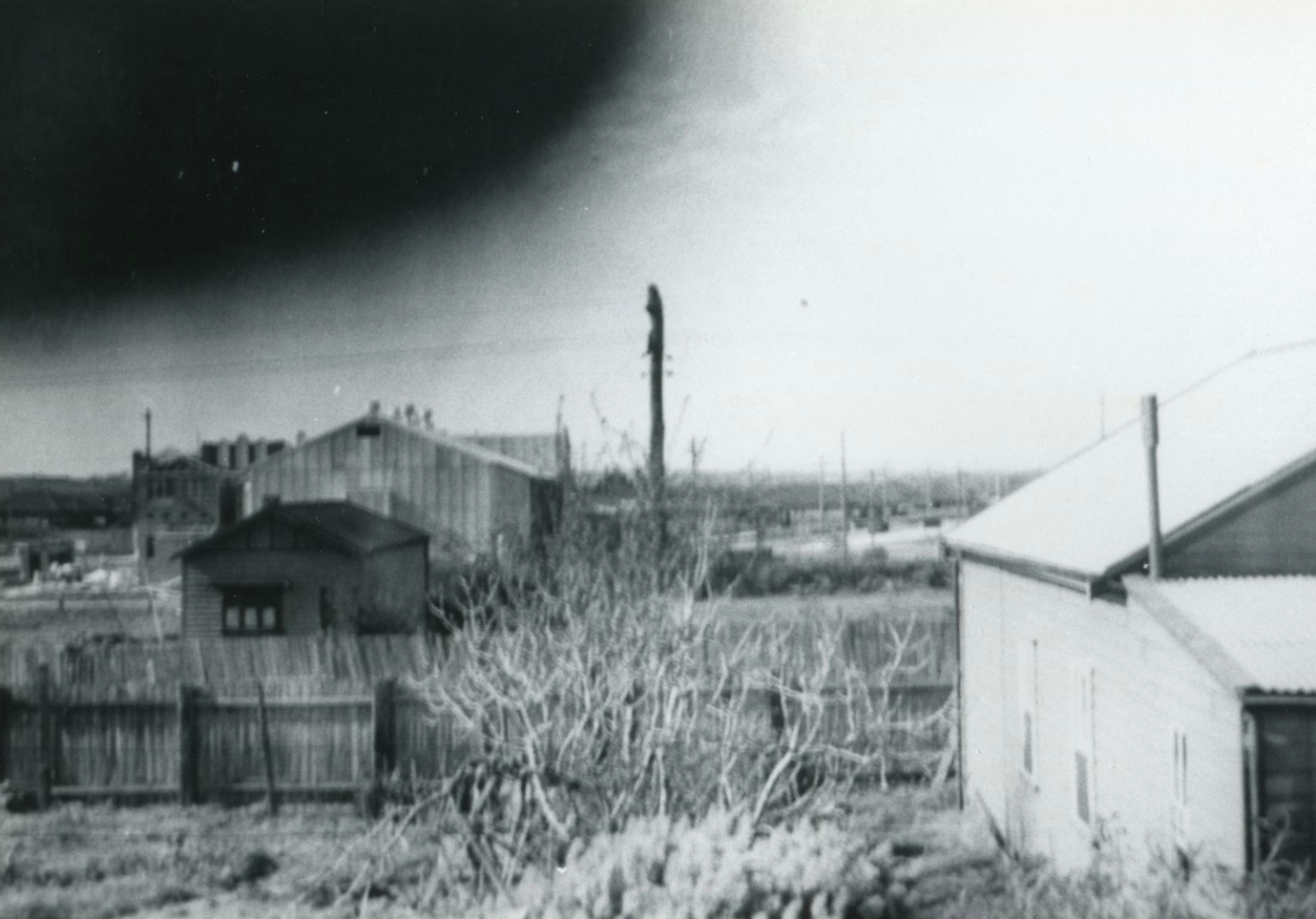
Dumbleton bites the dust as the St. James (centre left) gives rise to Beverly Hills, 1940. Image courtesy Georges River Libraries
A strip of palm trees down the centre of King Georges Road was added to complement the Hollywood theme in a move no one in the 1940s could have predicted would become so tacky by the present day.
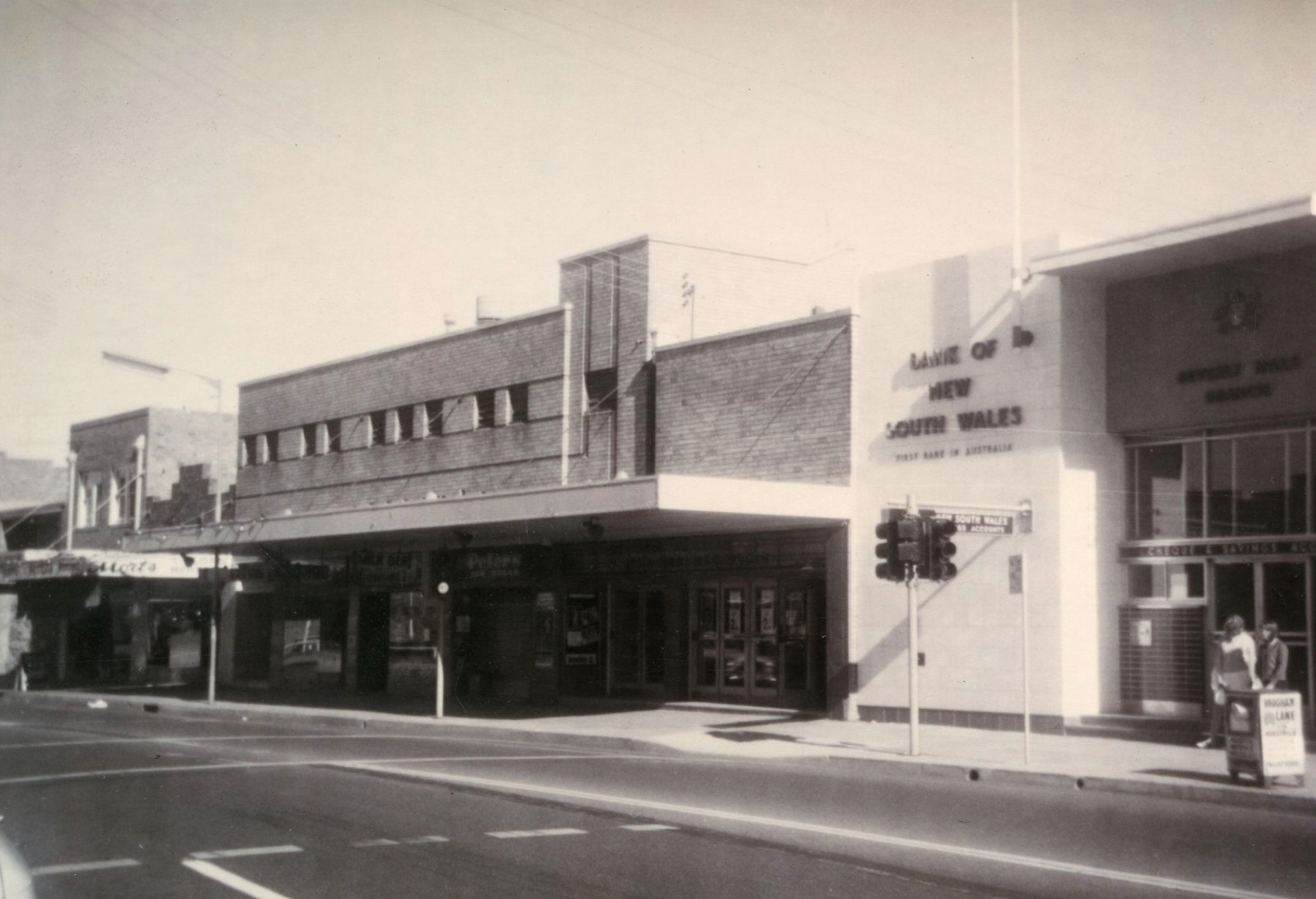
St. James Theatre looking very much like a bank, 1966. Image courtesy Georges River Libraries
The St. James Theatre entertained the residents of the growing suburb (even those older residents who had loudly complained about the name change) for decades until the 1970s, when the voracious Hoyts incorporated it into its suburban chain.
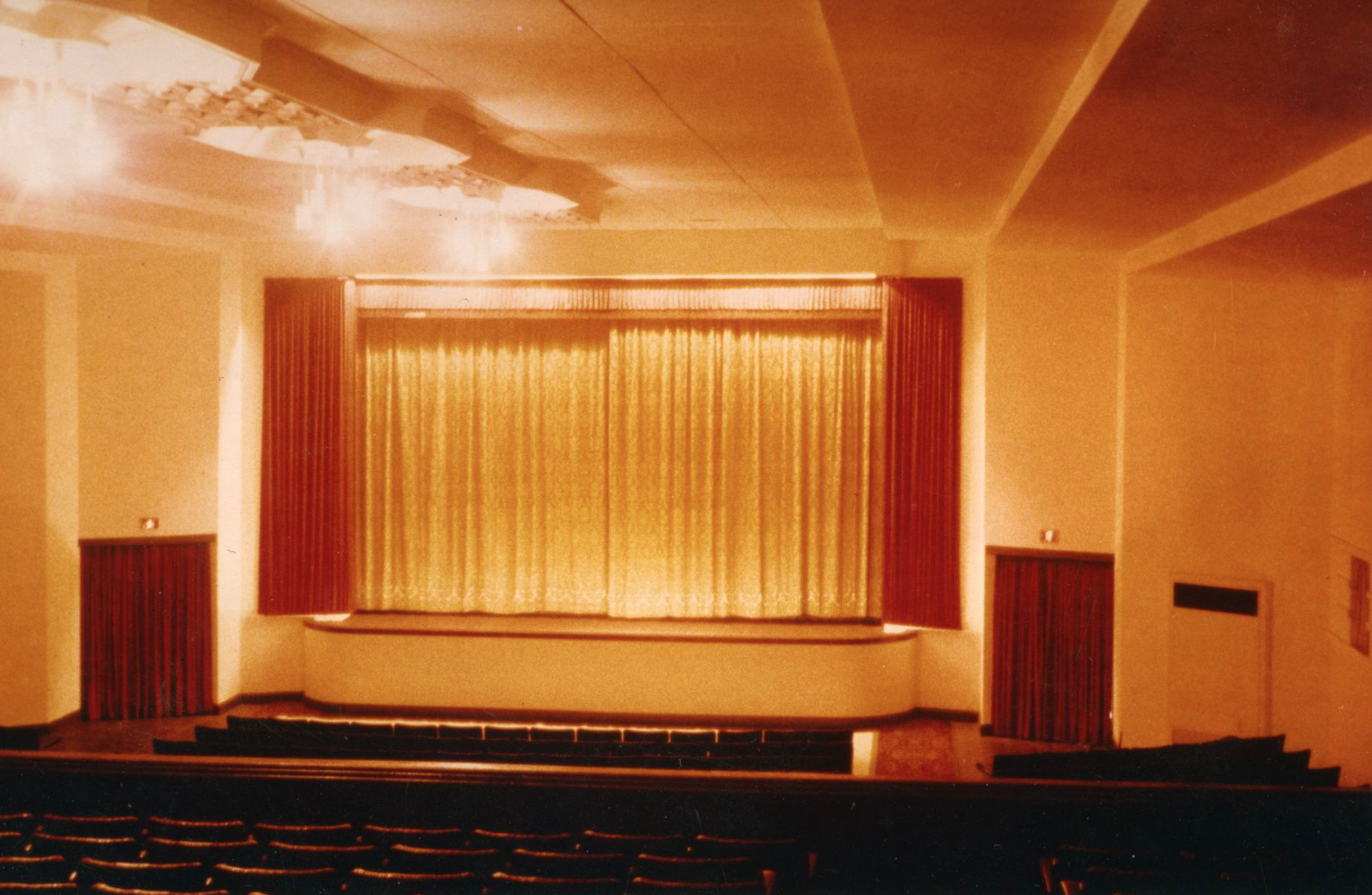
Inside the St. James Theatre, 1981. Image courtesy Georges River Libraries
By 1978, it had fallen into disrepair like many of its suburban cousins that had survived the mass demolition of such cinemas during the progressive 60s, and was showing adult films. Saint James indeed.
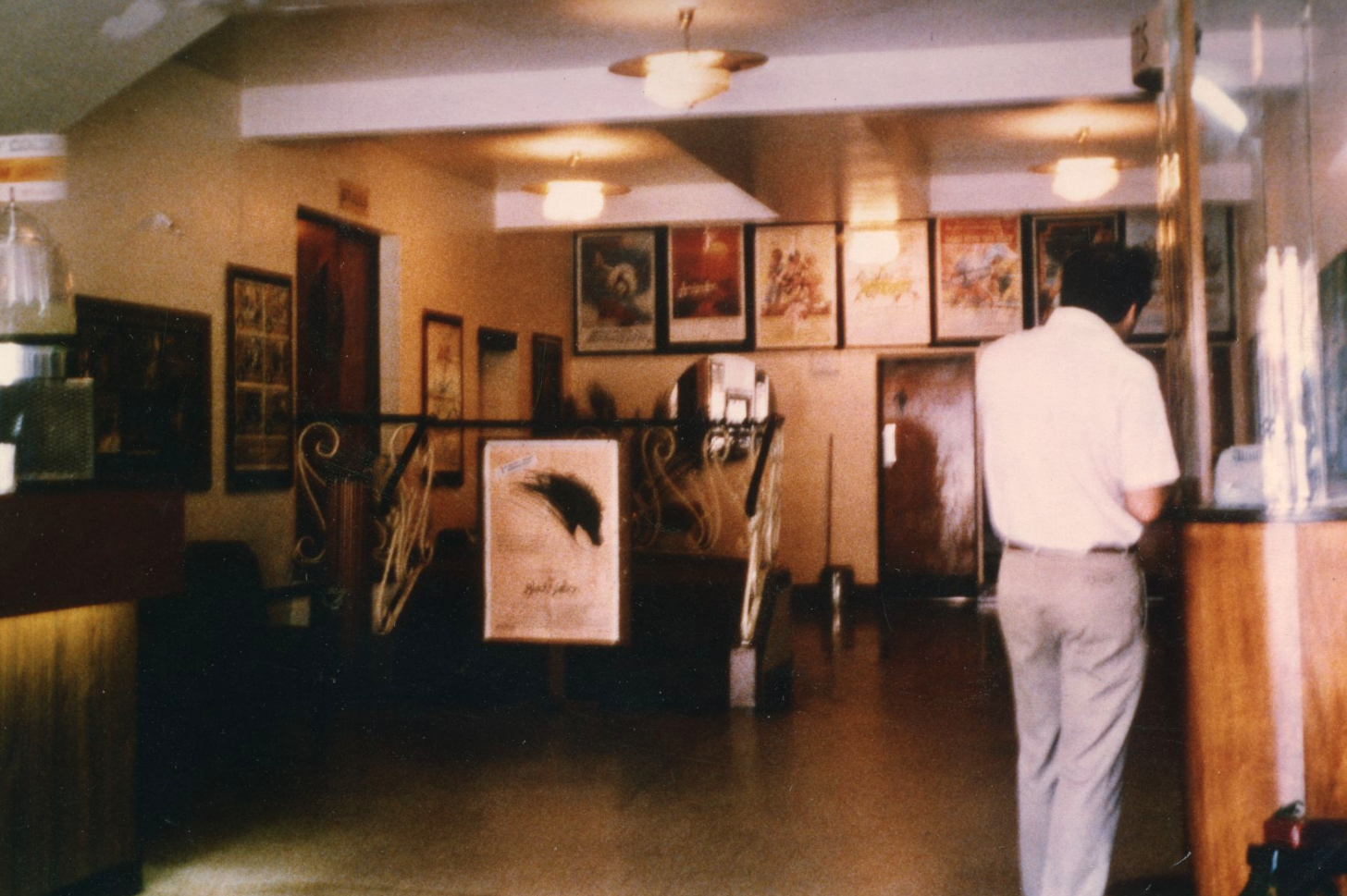
St. James Theatre lobby, 1980. Image courtesy Georges River Libraries
It was that year when developer Jim Tsagias bought the St. James, with plans to transform it into a function centre. Something changed his mind (perhaps the palm trees) and he decided to restore it as a cinema.
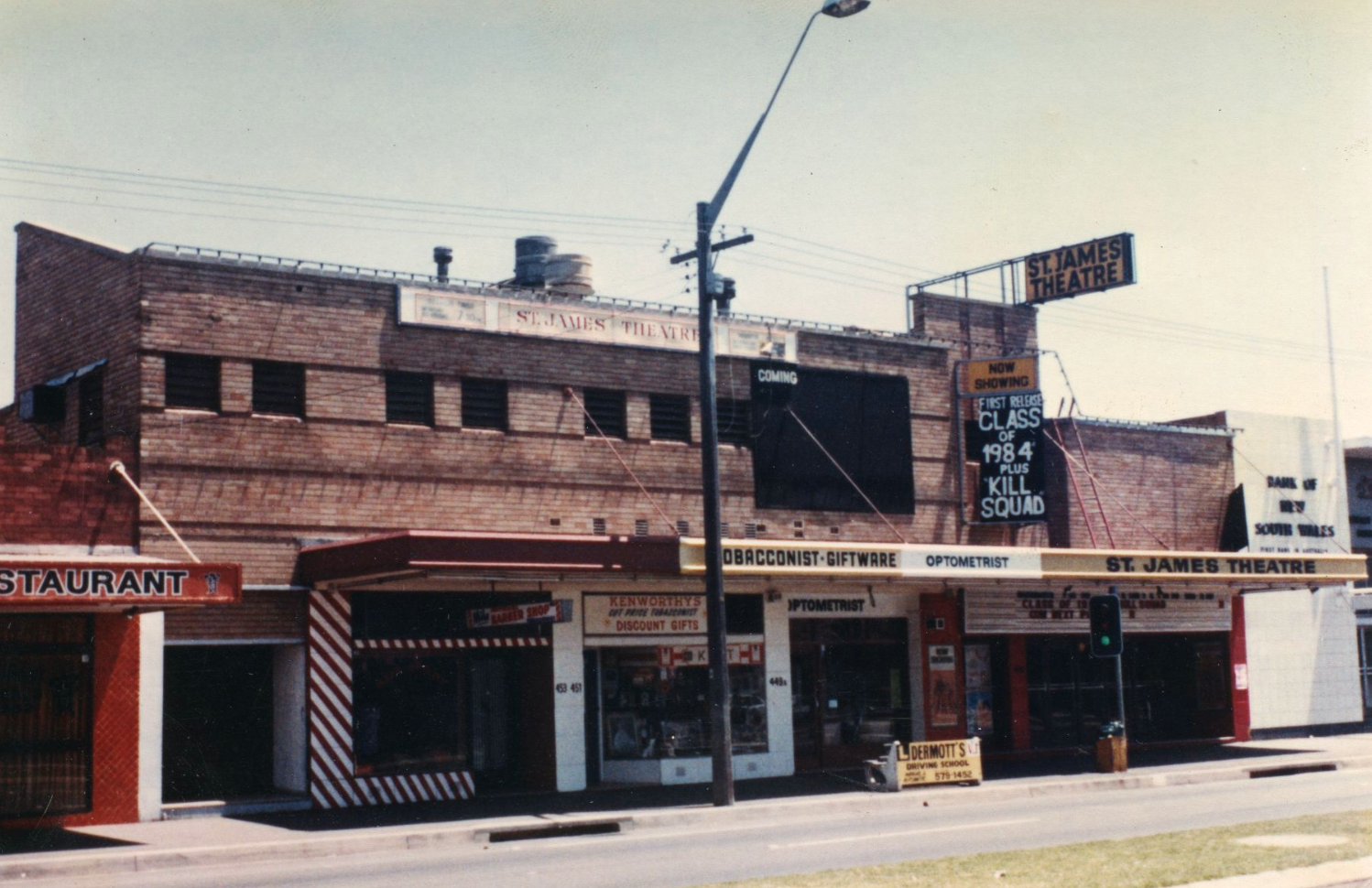
The final reel of St. James Theatre, 1982. Image courtesy Georges River Libraries
In 1982 it was reopened as the one-screen Beverly Hills Cinema, and in 1983 it was converted to a twin.
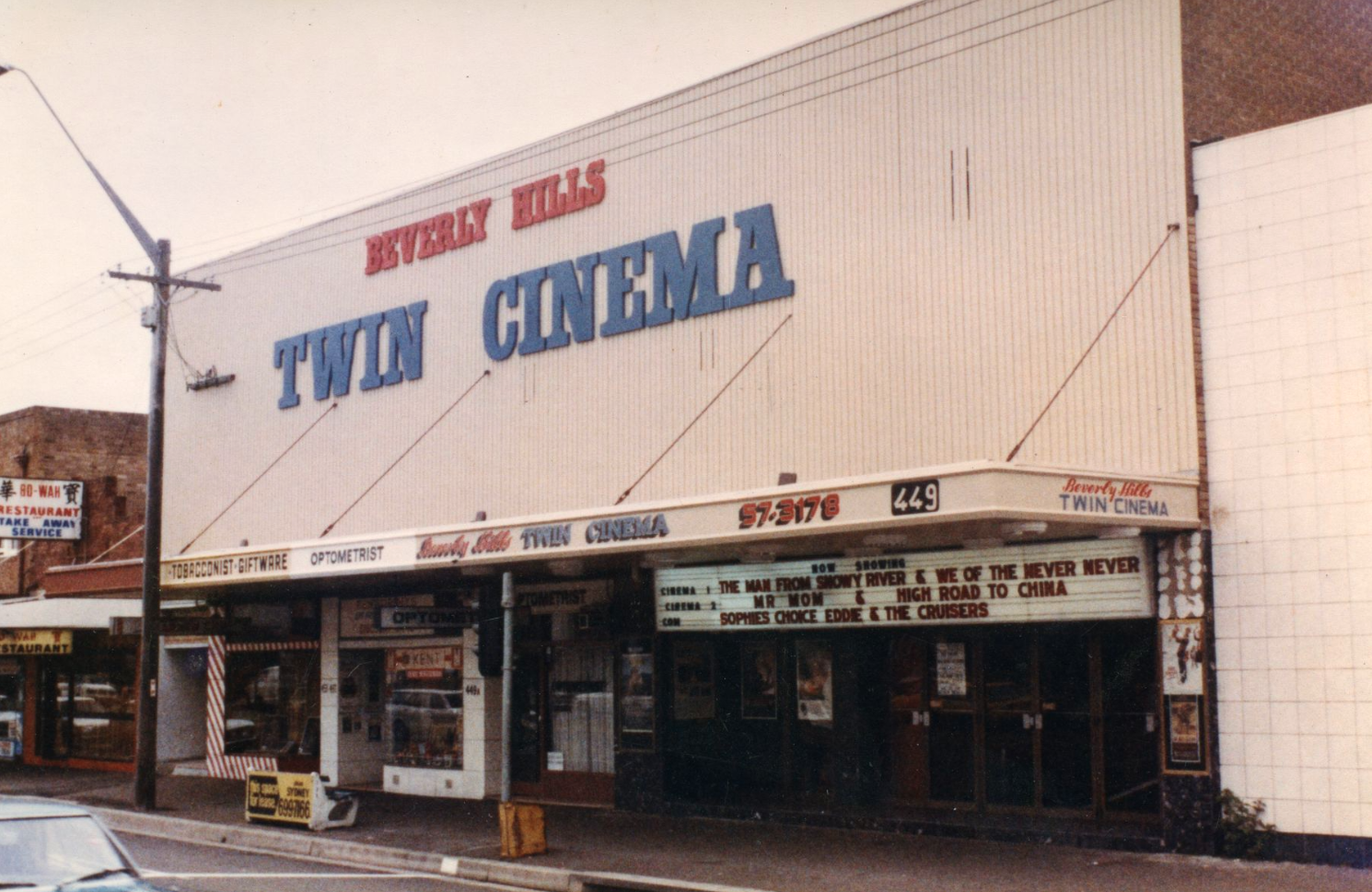
Seeing double at Beverly Hills Twin Cinema, 1983. Image courtesy Georges River Libraries
And couldn’t you tell. For years, the bigger Cinema No. 1 would play host to the big budget blockbusters, while smaller, more intimate pictures or films late in their run were relegated to the tiny Cinema No. 2, which had been shoehorned in above the first. It was an awkward setup, but one that built a reputation as the cheapest cinema in Sydney (based on ticket prices, of course), and became one of the most popular family venues in the south west, especially when coupled with the nearby Beverly Hills Pizza Hut. Movies then all-you-can-eat pizza: it doesn’t get much more 90s than that.
The cinema was looking a bit dated by the early 2000s, but not as bad as the bank next door (originally a Bank of NSW, later a Westpac). Sandwiched between the cinema and the Pizza Hut was one of so many suburban bank branches closed during that time, and it sat dormant for many years just like the Hut.
Perhaps realising it wasn’t a good look, and that there was an opportunity to expand, the Tsagias family bought the bank in 2004 and moved in, creating a video arcade in the new space which greatly relieved pressure from the cramped waiting area.
But this wasn’t enough. In 2008, a complete redevelopment saw the Beverly Hills upgraded to a six-screen cinema. The derelict Pizza Hut was cut in half to make room for more screens and a mini-power station, and the entire facade facing King Georges Road was given the facelift (in true Beverly Hills fashion) that it sports today.
Not quite the case around the back, though.
From the alley behind the cinema, it’s easy to see the layout of the original St James and the bank next door. The structure on the extreme left is new, and sits on the Pizza Hut’s territory. The Pizza Hut recently vanished from existence, perhaps to make way for more parking for the cinema, or a new restaurant (just what BH needs). Whenever you see extensive renovations going on, it’s usually a safe bet that it’s being done to prepare the property for sale. Sure enough, the Tsagias family placed the Beverly Hills Cinema on the market late last year. It seems as if Event Cinemas has taken control, at least of the screening coordination, but it remains to be seen if the Beverly Hills will remain a cinema under a new owner.
If it doesn’t, they may have to change the suburb’s name again.
Commonwealth Banking Corporation/Commonwealth Bank – Enmore, NSW
In 1991, the Commonwealth Bank had a brainwave: “Everyone hates big business, so let’s sound less like one.” And so ended over 30 years of the Commonwealth Banking Corporation, which gave way to the kinder, warmer Commonwealth Bank we know today.
The reality is that in 1959, the Commonwealth Bank of Australia split into two entities; one good (Reserve Bank of Australia), and one pure evil (the Commonwealth Banking Corporation). And no, changing your name back hasn’t fooled anyone, CBA.



